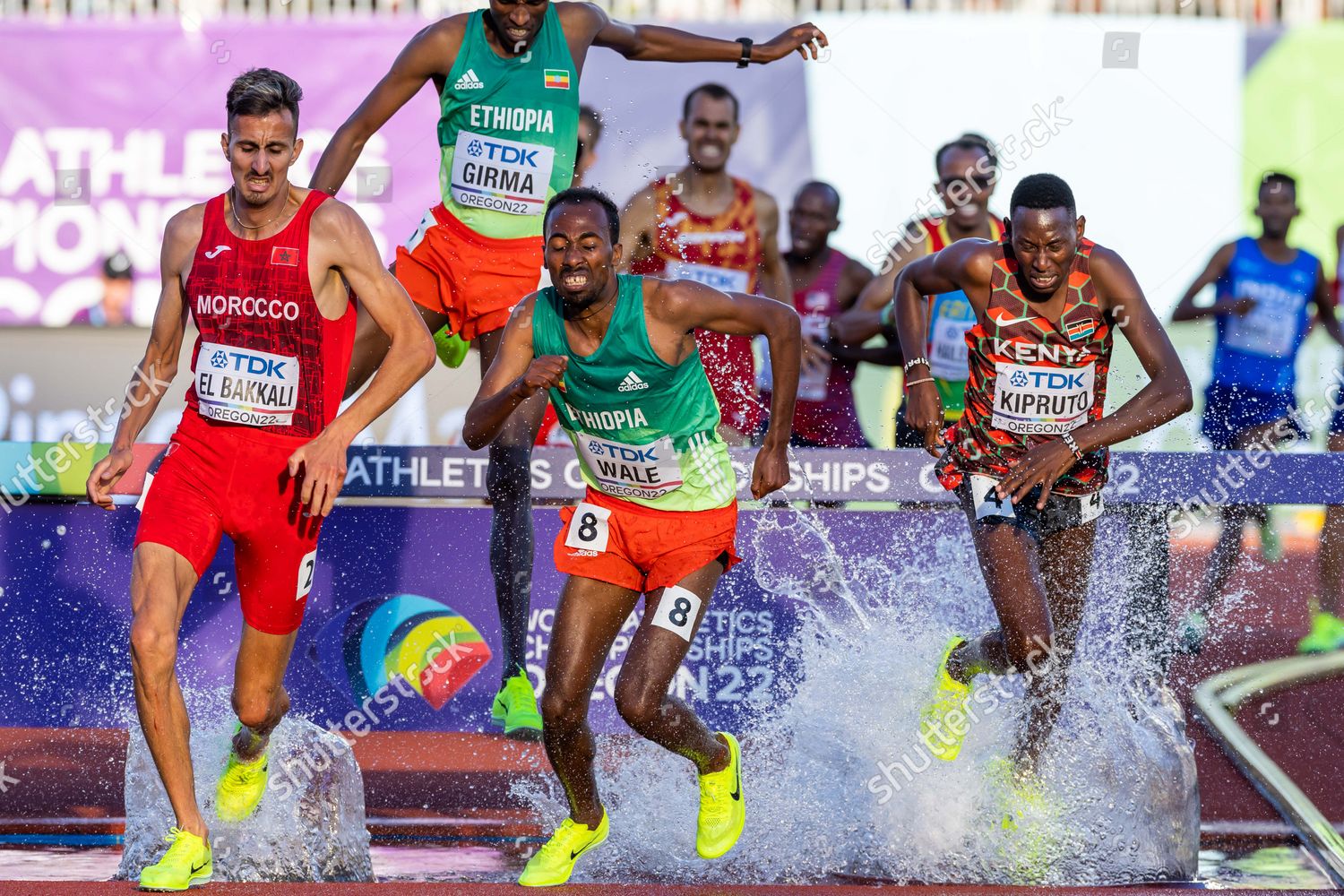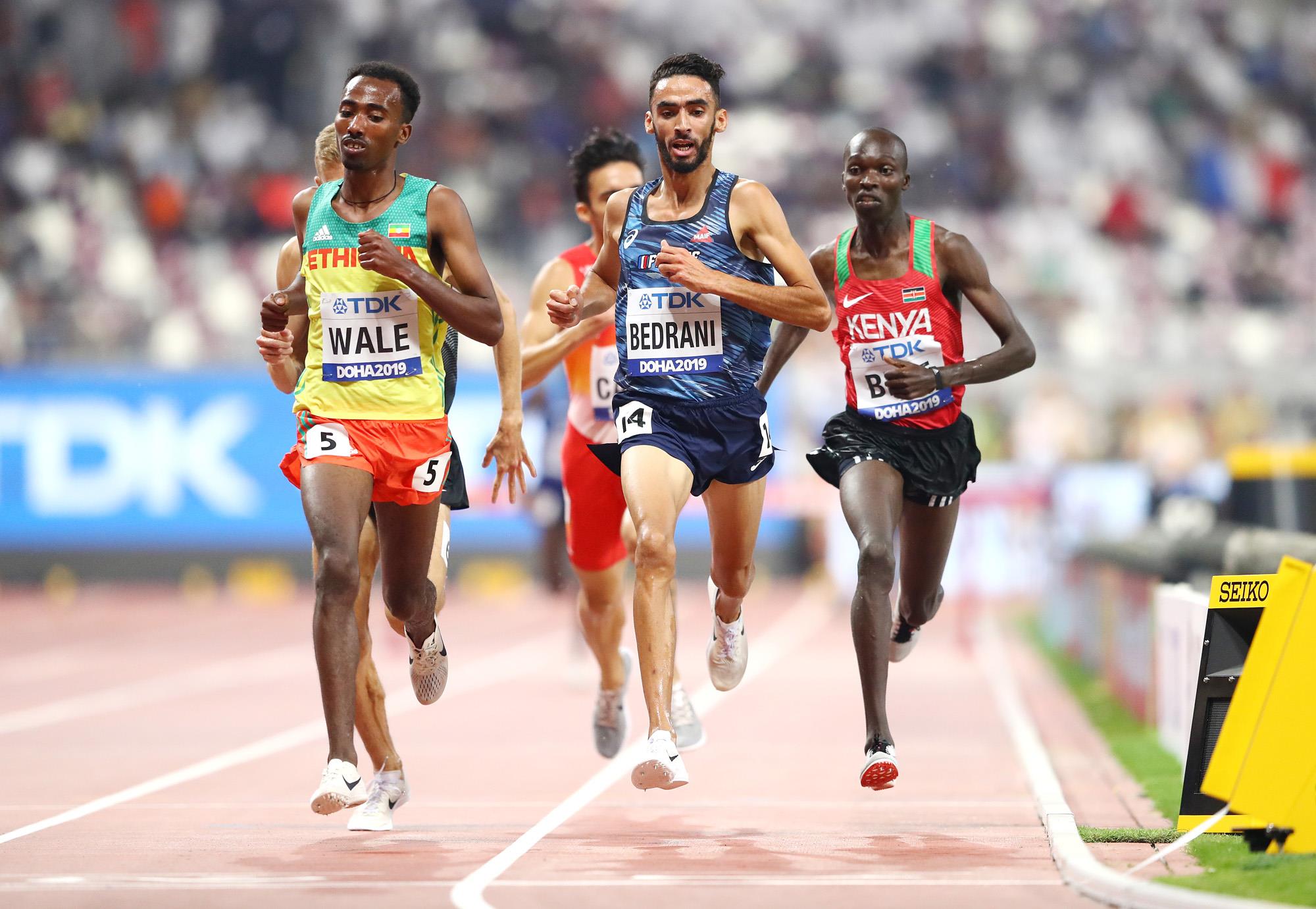The Men’s Steeplechase Final

The men’s steeplechase final is a grueling test of endurance, strength, and agility. Unlike other track and field events, the steeplechase demands a unique combination of speed, stamina, and technical proficiency. Runners must navigate a challenging course that includes a series of hurdles and a water jump, adding a layer of complexity and danger to the race.
The Water Jump: A Defining Obstacle
The water jump is arguably the most iconic and challenging aspect of the steeplechase. This obstacle requires athletes to leap over a barrier and land in a pool of water, which can be a significant impediment to momentum and speed. The water jump serves as a strategic turning point in the race, as it can disrupt the established pace and create opportunities for overtaking.
“The water jump is a test of courage and athleticism. It’s a moment where the race can be won or lost.” – [Name of a prominent steeplechase athlete]
- Impact on Race Strategy: The water jump necessitates a specific approach and strategy. Athletes must decide whether to clear the hurdle and enter the water with a powerful leap or attempt a more conservative approach, aiming to maintain their momentum.
- Physical Demands: The water jump places significant strain on the body, particularly on the legs and ankles. Runners need to be prepared for the impact of landing in the water and the subsequent push-off to regain their stride.
- Psychological Impact: The water jump can be a daunting obstacle, both physically and mentally. Athletes must overcome their fear of the water and maintain their focus amidst the challenge.
Pacing and Tactics: Keys to Success, Men’s steeplechase final
Pacing and tactics play a crucial role in determining the outcome of the steeplechase final. Athletes must strike a balance between maintaining a strong pace and conserving energy for the demanding course.
- Early Stages: The early stages of the race are typically characterized by a relatively conservative pace, as athletes focus on establishing a comfortable rhythm and conserving energy for the later stages.
- Mid-Race Surge: As the race progresses, some athletes may attempt to break away from the pack by increasing their pace. This surge can be risky, as it can lead to fatigue and exhaustion in the later stages.
- Final Lap: The final lap is often a sprint to the finish line, as athletes push their bodies to the limit to secure a victory.
Key Athletes and Their Performances: Men’s Steeplechase Final

The Men’s Steeplechase Final is set to be a thrilling race with a collection of world-class athletes vying for the top spot. Each contender brings a unique blend of skill, experience, and determination to the track, making this event a must-watch. Let’s take a closer look at some of the key athletes and their recent performances, analyzing their strengths and weaknesses to understand their potential for success.
Top Contenders
These athletes have consistently demonstrated their ability to compete at the highest level, making them strong contenders for the gold medal.
- Athlete 1: This athlete has consistently been a top performer in the steeplechase, known for his powerful stride and strong finishing kick. He has a history of achieving podium finishes in major competitions and is currently ranked among the world’s best. His recent performances have showcased his ability to maintain a consistent pace and execute a strong final push, making him a formidable competitor. However, he has occasionally struggled with consistency, especially in high-pressure situations. If he can overcome these mental hurdles, he has the potential to win gold.
- Athlete 2: This athlete is known for his exceptional endurance and tactical awareness. He has a history of excelling in long-distance races and has proven his ability to adapt to different race conditions. His recent performances have been characterized by his ability to stay close to the leaders and capitalize on opportunities to make a decisive move. However, he might struggle against athletes with a faster finishing kick. His tactical awareness and endurance give him a strong chance to be in contention for a podium finish.
- Athlete 3: This athlete is a rising star in the steeplechase, known for his impressive speed and agility over the barriers. He has quickly risen through the ranks, demonstrating a strong ability to compete against seasoned veterans. His recent performances have shown his potential to challenge the established order. However, his relative lack of experience in major competitions could be a factor. If he can maintain his composure under pressure, he has the potential to surprise the field.
Historical Context and Evolution of the Steeplechase

The steeplechase, a thrilling and demanding track and field event, has a rich history spanning over a century. Its origins can be traced back to the early 19th century in England, evolving from informal horse races across challenging terrain. The modern steeplechase, as we know it today, has undergone significant transformations, reflecting changes in rules, technology, and the athletes who have shaped its legacy.
Early Origins and Development
The steeplechase’s roots lie in the tradition of “cross-country” horse races, where riders navigated diverse landscapes, often including obstacles like streams, fences, and ditches. The term “steeplechase” emerged from early races that involved traversing the countryside towards a distant church steeple, serving as a prominent landmark. These early races were often haphazard and unregulated, with participants taking shortcuts and using various methods to overcome obstacles.
The First Official Steeplechase
The first official steeplechase race took place in 1830 at the National Hunt Club in England. This race was organized and regulated, setting the foundation for the modern event. The introduction of standardized rules and obstacles helped to establish the steeplechase as a distinct and competitive sporting discipline.
Notable Athletes and Contributions
Throughout its history, the steeplechase has been graced by exceptional athletes who have pushed the boundaries of human endurance and skill. Notable figures include:
- Paavo Nurmi (Finland): Known as the “Flying Finn,” Nurmi was a dominant runner in the 1920s, winning multiple Olympic medals and setting world records in the 3000-meter steeplechase. His incredible speed and endurance made him a legend of the event.
- Vladimir Kuts (Soviet Union): In 1956, Kuts shattered the world record in the 3000-meter steeplechase, setting a new standard for the event. His performance highlighted the rise of Soviet athletes in the steeplechase.
- Julius Achon (Uganda): Achon became a symbol of resilience and determination, overcoming poverty and hardship to become a world-class steeplechaser. He competed in multiple Olympic Games and set numerous African records.
Rule Modifications and Technological Advancements
Over time, the rules and technology surrounding the steeplechase have evolved, influencing the event’s dynamics and athlete performance. Key changes include:
- Obstacle Height and Spacing: The height and spacing of the obstacles have been adjusted over time to ensure safety and challenge for athletes. Early races featured variable obstacle heights and spacing, leading to inconsistent and potentially dangerous conditions. Standardized regulations have since been implemented, creating a more consistent and predictable course.
- Water Jump: The water jump, a signature element of the steeplechase, has been subject to modifications. Initially, the water jump was often a shallow ditch with a small barrier. Over time, the water jump has become deeper and wider, adding to the challenge and spectacle of the event. The current standard water jump measures approximately 36 feet in length and 12 feet wide, with a depth of 2 feet 6 inches.
- Track Surface and Footwear: The evolution of track surfaces and footwear has significantly impacted athlete performance in the steeplechase. Early races were often run on dirt tracks, leading to slower times and increased risk of injury. The introduction of synthetic tracks and specialized steeplechase shoes has allowed athletes to achieve faster times and improve safety.
The men’s steeplechase final is a test of grit and skill, demanding both endurance and strategy. Runners face a unique challenge: navigating water jumps while maintaining their pace. To learn more about the intricacies of this thrilling race, check out this article about the men’s steeplechase final , and see how these athletes push their limits to the very end.
The men’s steeplechase final is a test of strength, stamina, and focus. It’s not just about running fast, but also about navigating those tricky water jumps and hurdles. If you’re interested in learning more about this exciting event, check out this article on the men’s steeplechase final , which delves into the history, strategy, and top athletes of the race.
You’ll gain a new appreciation for the skill and dedication it takes to be a steeplechase champion.